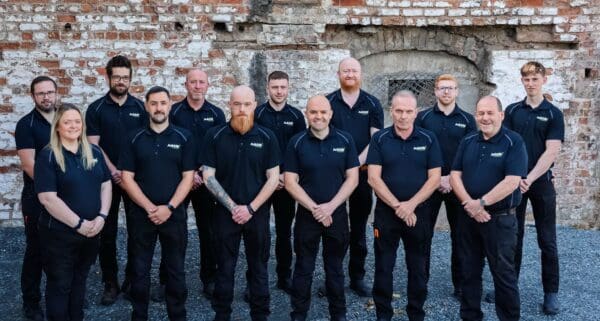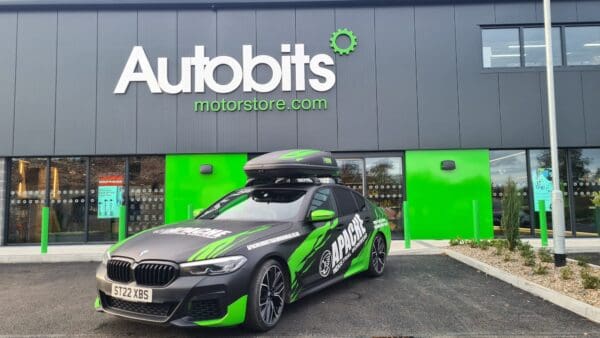Things to know before you tow ! How to tow a car safely
- Blog, Tips & Advice
- Published
- Updated: March 3, 2021
Towing isn’t something we do very often, but it pays to be prepared for problems, and you never know when you might need to be towed out of trouble or extend the same courtesy to a mate in need.
For people who have never towed a car before, here we offer a complete guide on how to tow another car safely.
Things to Know Before You Tow
The Maximum Allowable Tow Rope Length is 4.5 Metres
Make sure your tow rope is no longer than 4.5 metres if you don’t want to fall foul of the law. The rope can be as short as you like, but it needs to be long enough to give the car on tow sufficient time to stop and react.
If your tow rope is longer than 1.5 metres, you’ll need to attach a coloured cloth or high-vis sign to make sure it’s visible to other drivers.
Use an Appropriate Tow Car
As a rule of thumb, try to find a tow car that’s heavier than the one being pulled. Your car’s manual will give you an idea of the maximum tow weight.
You Need to Display the ‘On Tow’ Sign
Most tow ropes and bars are supplied with an ‘On Tow’ sign, which needs to be displayed on the back of the car being towed. This is a legal requirement, and you could be challenged by the police if you’re caught towing without the sign.
The ‘On Tow’ Driver Must be Fully-Qualified
No ifs or buts about it, broken-down cars on tow must be driven by a qualified driver.
Both Cars Must Have Their Lights on When It’s Dark
Broken-down vehicles on tow are treated like any other car in the eyes of the law, and as such must have their lights on when it’s dark, or when the weather’s murky. This just makes sense as other drivers still need to be able to see you.
Obviously, this can be a problem if the breakdown was caused by a dead or faulty battery, in which case you’ll need to call for a professional.
The On-Tow Car Must Have the Ignition Switched On
Even if the engine’s dead, the ignition will need to be left at the ‘on’ position to disengage the steering lock. Remember – cars with power steering will be much, much harder to handle when the engine isn’t running, as more effort is needed to turn the steering wheel.
How to Tow Another Car Safely
Make Sure the Car is in Neutral
So that the wheels are able to turn freely, always make sure the on-tow vehicle is in neutral before towing. If you leave it in gear, the wheels won’t turn and you could cause serious damage to the engine.
Check the Manual Before Towing an Automatic Car
If you want to tow an automatic car with the driven wheels in contact with the road, you’ll need to read the manual carefully about towing limits, as you risk damaging the transmission system. The manual should provide information on the maximum speed and distance the car can be towed for.
Tow Bars are Preferred Over Tow Ropes
Traditional tow ropes are slowly being replaced by rigid tow bars (or poles), which offer better performance and reliability, and are considered safer. They make it easier to control the car being towed, and are less likely to snap under pressure. However, ropes are much cheaper, and still provide a good safety net for everyday driving.
It’s Illegal to Tow a Car on a SORN
If you’ve bought an old car in need of refurbishment, towing might be the only way of getting it home. But if the car has been registered as SORN (Statutory Off Road Notification) it can’t go on the road at all, and this includes for towing.
Here, we list the things you’ll need to tow a car safely.
- A tow rope or tow bar – Make sure you buy a tow rope or bar that meets the weight limit of the vehicle, and never use towing equipment that’s damaged or corroded.
- An ‘On Tow’ sign – These are normally supplied with new tow ropes and bars. Make sure this is attached to the broken-down vehicle. You should also tie a high-vis piece of cloth to longer tow lines.
- Two towing eyes – These are metal hooks which allow a tow rope to be fitted, and are needed on both cars. On older models, they may be built in and are often found under the front/rear bumper or behind a plastic casing. On newer cars, you may need to screw them into a socket (often found behind a plastic panel).
When setting up a car for towing, make sure you connect the tow rope to the official towing points for that specific model of car – details of which can be found in the manual. Remember, tow points are often concealed behind a cover, so you’ll need to lift these open to connect the rope or bar.
The distance at which the front towing car will need to park away from the broken-down vehicle will depend on the length of the rope or bar. Make sure the gap isn’t far enough that the rope is pulled tight, but that it’s fully extended with no hidden loops and knots, which could cause snagging.
Source: https://www.holtsauto.com



